The Router Table Saga
When I got started in woodworking one of the first tools I was exposed to was the router. As many of you know the catalyst to my woodworking passion was the inheiritance of a bunch of tools from my wife’s grandfather. He had 3 routers: a Porter Cable 690 combo kit, a Hitachi M12V, and an original Stanley from the 50s.
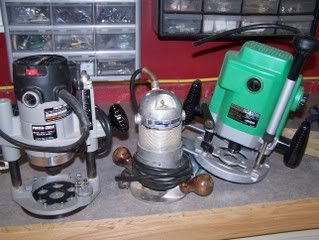
I started building smaller pieces as well as some built in bookshelves using these routers to cut my first dado and decorative edges. I discovered ebay as a good source for router bits too.
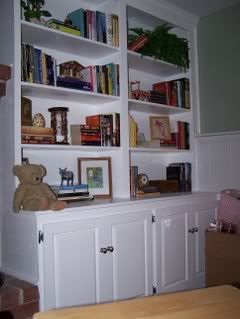 I put the shelf dados and triple bead edges on these with my routers. The doors I built later once I had a router table.
I put the shelf dados and triple bead edges on these with my routers. The doors I built later once I had a router table.
I also stumbled across The Router Workshop on PBS. This show was a little hokey, but it was amazing to me that these guys built all that stuff using just a router table. I had heard about putting the router in a table, but hadn’t really investigated it. The whole internet revolution was still new at the time so the plethora of information we have at our fingertips now just wasn’t there so PBS ended up filling that void. Long story short, I bought one of their router tables because it seemed like a well constructed solution. This essentially functioned as a bench top router table and it has served me well for over 5 years. However, lately I find myself devising complex workarounds because dragging out the table and setting it up along with having the extra counter/bench space to set it up on has become too time consuming. I have oft longed for a full fledged, dedicated router station, but I have been hesitant to give up the floor space in my one car garage shop. When I recently built a stand for my contractor table saw, I thought about adding a router extension and designed the plans to allow for that future addition.

So about a month ago I embarked on this build knowing that I would have to space it out over some time because I had several projects in process (some of which were actual commissions). I had planned to upgrade to a router lift and I purchased the JessEm Mast-R-Lift from Rockler of course wouldn’t you know that it went on a big sale about a week after I received mine in the mail! I actually put up a blog series on the actual construction of the table top on Lumberjocks in response to a question I had there in the forums. So I will skip over that part here and rely on you all to hit the link and patronize Martin’s fantastic site.
So after getting the table top installed and making some cuts I was overjoyed with how it was working and the complete lack of setup needed to get cutting. The router lift makes my life so much easier. I used this table for my recent flurry of Adirondack furniture builds (10 chairs, 6 footstools, whew!) to round off all the edges on the slats. You can only imagine the pile of sawdust on my floor by the end of that session. I also was missing some of the on board storage that I have with my little bench top model. So I set about designing a cabinet that could function as dust collection and storage for bits and wrenches. I wanted to make sure it was supported well too so that I would not see any table sagging over the years.
First I added some 2×4 angled supports. These are screwed into the underside of the table and to the ash sides. They are bolted to the table saw base.
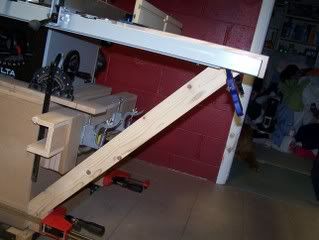
Now I took some measurements between the supports because I mean to mount the cabinet to the supports rather than to the table top. Here is a dry fit of the carcass:
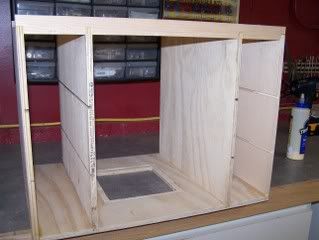
The top is open and I just ran two ledger strips across the top. I will drive a few screws through this into the table top for alignment purposes, but the weight will be supported by these fittings.
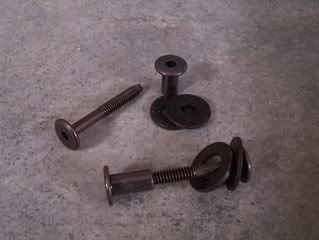
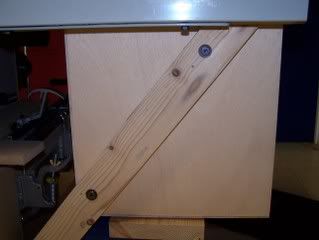
These worked really well because of the tight space inside the cabinet. With the bolts accepting an allen key I was able to squeeze my hand in to hold the key while tightening the assembly.
Next I fitted the door. I had some stereo cabinet hardware hanging around and put it to good use.
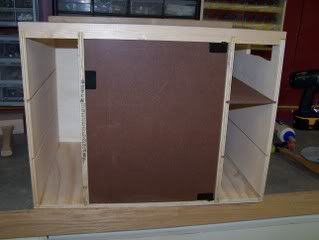
I wanted the door to fit as tight as possible so I chiseled out the recess for the hinges.
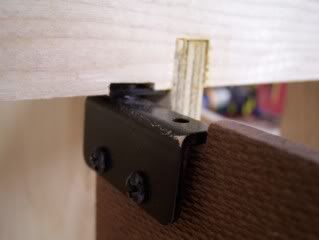
Since I had the chisels all warmed up I cut out a recess for this jointer dust port that I bought several years ago for another project that I ended up scrapping. I know that the recess is really not necessary. I could have just glued the plate in with some poly glue, but I like my hand tools so what the heck.
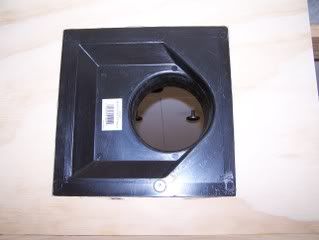 Using a marking knife I scribed a line around the port. Then with dividers I marked another rectangle inside that scribed line and cut that out with the jig saw. Now I went back with chisels and chopped the rabbet. Just for fun I smoothed out the rabbeted ledge using my small router plane. Aren’t hand tools fun!
Using a marking knife I scribed a line around the port. Then with dividers I marked another rectangle inside that scribed line and cut that out with the jig saw. Now I went back with chisels and chopped the rabbet. Just for fun I smoothed out the rabbeted ledge using my small router plane. Aren’t hand tools fun!
Then I set about making the bit storage drawers. There are spots for 6 drawers. I only cut bit holes in three drawers for now. One of the six drawers is used for storage of insert plates, wrenches, set up bars, etc. The other two I will leave empty for now future growth.
Finally, I set the cabinet in place and shimmed it to height with whatever was laying around the shop. I drilled the 3/8″ holes through the supports and into the cabinet side and bolted the whole thing into place.
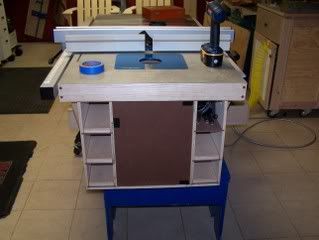
At the last minute I decided to cut a hole in the side of the cabinet and mounted this switch that I have had buried in a drawer for 5 years or so. The power cord from the router runs from the main compartment up into the top right storage drawer and plugs into the switch from there. The main power cord runs out the back of the cabinet.
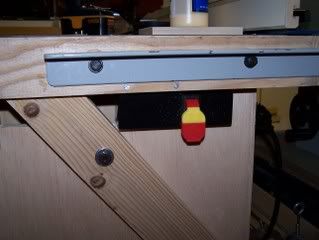
Overall I am really happy with this table. The dust collection works great with suction at the fence and out the bottom of the cabinet. The open top to the cabinet works as inflow for backup air since the door does not have any holes in it. I have plenty of bit storage with lots of room to grow. Finally, all the little accessories have a place to live in the top right drawer. The parting shot is the completed cabinet. You can see that I attached the drawer fronts with screws and then plugged them. I had some of these knobs from another projects so they fit the bill nicely.
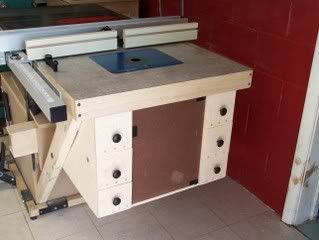
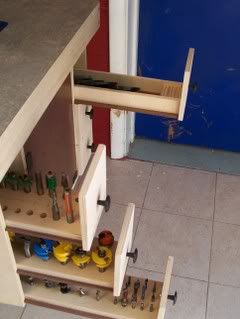
I hope you enjoyed my little journey here and it will help you if you ever decide to build one of these.


